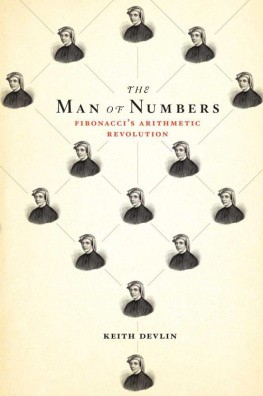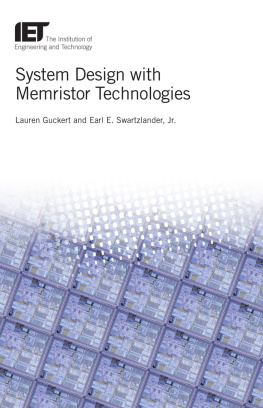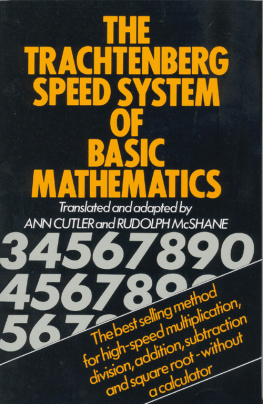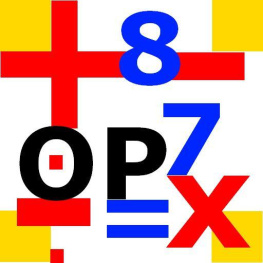
Contents
TRY TO IMAGINE A DAY WITHOUT numbers. Never mind a day; try to imagine getting through the first hour without numbers: no alarm clock, no time, no date, no TV or radio, no stock market report or sports results in the newspapers, no bank account to check. Its not clear exactly where you are waking up either, for without numbers modern housing would not exist.
The fact is, our lives are totally dependent on numbers. You may not have a head for figures, but you certainly have a head full of figures. Most of the things you do each day depend on and are conditioned by numbers. Some of them are obvious, like the ones listed above; others govern our lives behind the scenes. The degree to which our modern society depends on numbers that are hidden from us was made clear by the worldwide financial meltdown in 2008, when overconfident reliance on the advanced mathematics of futures predictions and the credit market led to a total collapse of the global financial system.
How did weas a species and as a societybecome so familiar with and totally reliant on these abstractions our ancestors invented just a few thousand years ago? As a mathematician, I had been puzzled by this question for many years, but for most of my career as a university professor of mathematics, the pressures of discovering new mathematics and teaching mathematics to new generations of students did not leave me enough time to look for the answer. As I grew older, however, and came to terms with the unavoidable fact that my abilities to do original mathematics were starting to wane a bita process that for most mathematicians starts around the age of forty (putting mathematics in the same category as many sporting activities)I started to spend more time looking into the origins of the subject I have loved with such passion since I made the transition from Its boring to Its unbelievably beautiful around the age of sixteen.
For the most part, the story of numbers was easy to discover. By the latter part of the first millennium of the Current Era, the system we use today to write numbers and do arithmetic had been worked outexpressing any number using just the ten numerals 0, 1, 2, 3, 4, 5, 6, 7, 8, 9, and adding, subtracting, multiplying, and dividing them by the procedures we are all taught in elementary school. (Units column, tens column, hundreds column, carries, etc.) This familiar way to write numbers and do arithmetic is known today as the Hindu-Arabic system, a name that reflects its history.
Prior to the thirteenth century, however, the only Europeans who were aware of the system were, by and large, scholars, who used it solely to do mathematics. Traders recorded their numerical data using Roman numerals and performed calculations either by a fairly elaborate and widely used fingers procedure or with a mechanical abacus. That state of affairs started to change soon after 1202, the year a young Italian man, Leonardo of Pisathe man whom a historian many centuries later would dub Fibonaccicompleted the first general purpose arithmetic book in the West, Liber abbaci , that explained the new methods in terms understandable to ordinary people (tradesmen and businessmen as well as schoolchildren). While other lineages can be traced, Leonardos influence, through Liber abbaci , was by far the most significant and shaped the development of modern western Europe.
Leonardo learned about the Hindu-Arabic number system, and other mathematics developed by both Indian and Arabic mathematicians, when his father brought his young son to join him in the North African port of Bugia (now Bejaa, in Algeria) around 1185, having moved there from Pisa to act as a trade representative and customs official. Years later, Leonardos book not only provided a bridge that allowed modern arithmetic to cross the Mediterranean, but also bridged the mathematical cultures of the Arabic and European worlds, by showing the West the algebraic way of thinking that forms the basis of modern science and engineering (though not our familiar symbolic notation for algebra, which came much later).
What Leonardo did was every bit as revolutionary as the personal computer pioneers who in the 1980s took computing from a small group of computer types and made computers available to, and usable by, anyone. As with those pioneers, most of the credit for inventing and developing the methods Leonardo described in Liber abbaci goes to others, in particular Indian and Arabic scholars over many centuries. Leonardos role was to package and sell the new methods to the world.
Not only did the appearance of Leonardos book prepare the stage for the development of modern (symbolic) algebra and hence modern mathematics, it also marked the beginning of the modern financial system and the way of doing business that depends on sophisticated banking methods. For instance, Professor William N. Goetzmann of the Yale School of Management, an expert on economics and finance, credits Leonardo as the first to develop an early form of present-value analysis, a method for comparing the relative economic value of differing payment streams, taking into account the time value of money. Mathematically reducing all cash flow streams to a single point in time allows the investor to decide which is the best, and the modern version of the present-value criterion, developed by the economist Irving Fisher in 1930, is now used by virtually all large companies in the capital budgeting process.
THE ONLY PIECE of the story of numbers that was missing was an account of Leonardo himself and, apart from a few scholarly articles, of the nature of his book. History has relegated him to an occasional footnote. Indeed, his name is known today primarily in connection with the Fibonacci numbers, a sequence of numbers that arises from the solution to the rabbit problem, one of many whimsical challenges he put in Liber abbaci to break the tedium of the hundreds of practical problems that dominate the book.
Part of the reason Leonardo has been overlooked, whereas comparable figures like Copernicus, Galileo, and Kepler were not, may be that to most laypersons science seems to serve a greater purpose than mathematics.
Another reason why generations may have overlooked Leonardo is that the change in society brought about by the teaching of modern arithmetic was so pervasive and all-powerful that within a few generations people simply took it for granted. There was no longer any recognition of the magnitude of the revolution that took the subject from an obscure object of scholarly interest to an everyday mental tool. Compared with Copernicuss conclusions about the position of Earth in the solar system and Galileos discovery of the pendulum as a basis for telling time, Leonardos showing people how to multiply 193 by 27 simply lacks drama.
The comparative neglect of Leonardo has no doubt been caused by two other factors. Very little was recorded about his life, discouraging biographies. And Leonardo was more a salesperson of modern arithmetic rather than its inventor. The mathematical advances he described in Liber abbaci were developed by others, and others also wrote books describing those mathematical ideas. In the world of scientific biography, the inventor tends to get the glory. But inventionsan idea, a theory, a process, a technologyneed to be made accessible to the world. The personal computer on which I write these words, with its familiar windows, mouse-controlled pointer, and the like, was invented by brilliant teams of researchers at the Stanford Research Institute and the Xerox Palo Alto Research Center in the 1970s, but it was put into everyones hands by a few pioneering entrepreneurs. The computer revolution would undoubtedly have happened anyway, just as we would have figured out the motion of the planets had Kepler not lived, and gravity without Newton. But the likes of Apple Computers Steve Jobs and Microsofts Bill Gates will always be linked to the rise of the personal computer, and in this way Leonardo should be linked to the rise of modern arithmetic.
Next page








